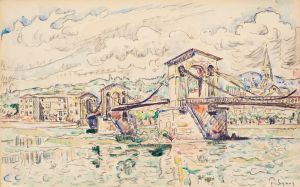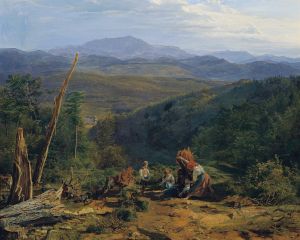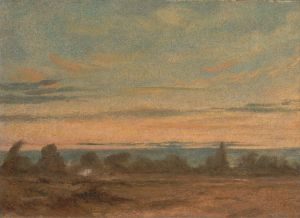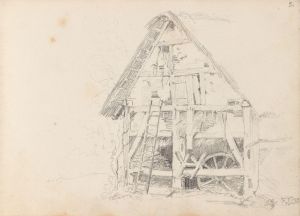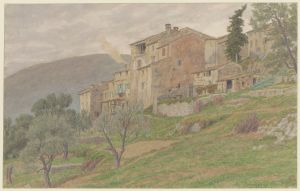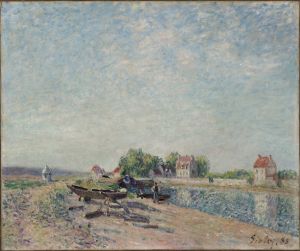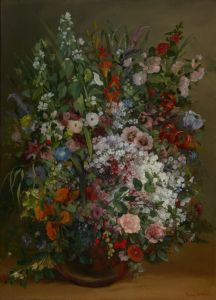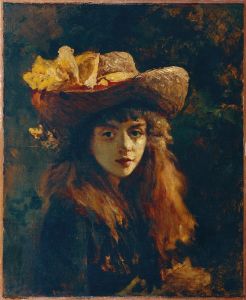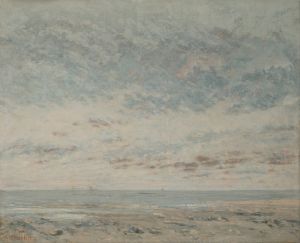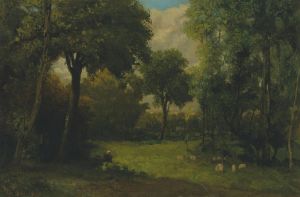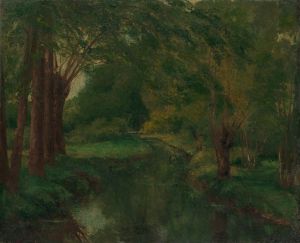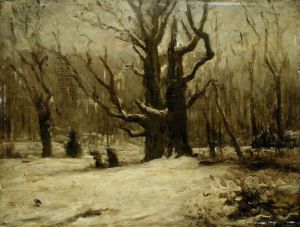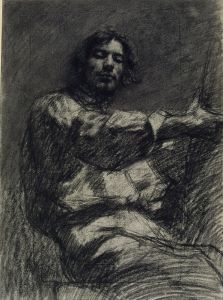
Un barrage près d’Ornans, or L’Écluse de la Loue
A hand-painted replica of Gustave Courbet’s masterpiece Un barrage près d’Ornans, or L’Écluse de la Loue, meticulously crafted by professional artists to capture the true essence of the original. Each piece is created with museum-quality canvas and rare mineral pigments, carefully painted by experienced artists with delicate brushstrokes and rich, layered colors to perfectly recreate the texture of the original artwork. Unlike machine-printed reproductions, this hand-painted version brings the painting to life, infused with the artist’s emotions and skill in every stroke. Whether for personal collection or home decoration, it instantly elevates the artistic atmosphere of any space.
"Un barrage près d’Ornans" or "L’Écluse de la Loue" is a painting by the renowned French artist Gustave Courbet, who was a pivotal figure in the Realism movement of the 19th century. Born in 1819 in Ornans, a small town in the Franche-Comté region of France, Courbet is celebrated for his commitment to depicting everyday life and landscapes with a focus on authenticity and detail.
This particular painting, created in 1862, exemplifies Courbet's dedication to capturing the natural beauty and rural life of his native region. The artwork depicts a scene along the Loue River, near Ornans, where Courbet spent much of his life and drew significant inspiration for his work. The Loue River, a tributary of the Doubs, flows through a picturesque landscape characterized by lush greenery and rugged terrain, which Courbet often explored in his paintings.
In "Un barrage près d’Ornans," Courbet presents a serene and detailed view of the river, focusing on a lock or dam structure, which is suggested by the title. The painting is notable for its realistic portrayal of water, vegetation, and the play of light, which are hallmarks of Courbet's landscape works. His technique involves the use of a palette knife, which allowed him to create texture and depth, giving the painting a tactile quality that enhances its realism.
Courbet's approach to landscape painting was revolutionary for his time. He rejected the idealized and romanticized depictions common in the works of his predecessors and contemporaries, choosing instead to portray scenes as they appeared to him. This commitment to realism is evident in "Un barrage près d’Ornans," where the natural elements are rendered with meticulous attention to detail, capturing the essence of the location without embellishment.
The painting also reflects Courbet's broader artistic philosophy, which was grounded in the belief that art should represent real and tangible subjects. He famously stated, "I cannot paint an angel because I have never seen one," emphasizing his focus on observable reality. This philosophy positioned Courbet as a leader of the Realism movement, which sought to portray the world truthfully and without idealization.
"Un barrage près d’Ornans" is part of a larger body of work in which Courbet explored the landscapes of his homeland. These works not only highlight his technical skill and innovative use of materials but also his deep connection to the natural environment of the Franche-Comté region. Through his landscapes, Courbet invites viewers to appreciate the beauty and complexity of the natural world, encouraging a deeper understanding of the environment and its significance.
Today, Gustave Courbet is recognized as one of the most influential artists of the 19th century, and his works continue to be studied and admired for their groundbreaking approach to realism and their profound impact on the development of modern art. "Un barrage près d’Ornans" remains an important example of his landscape painting, showcasing his ability to transform a simple scene into a compelling and enduring work of art.





